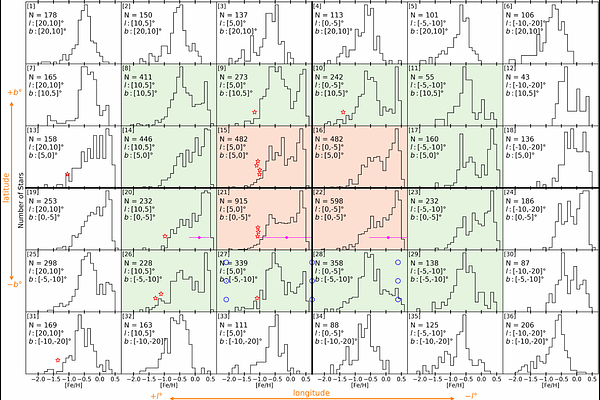The Spheroidal Bulge of the Milky Way: Chemodynamically Distinct from the Inner-Thick Disc and Bar

The Spheroidal Bulge of the Milky Way: Chemodynamically Distinct from the Inner-Thick Disc and Bar
Samir Nepal, Cristina Chiappini, Angeles Pérez-Villegas, Anna B. Queiroz, Stefano Souza, Matthias Steinmetz, Friedrich Anders, Arman Khalatyan, Beatriz Barbuy, Guillaume Guiglion
AbstractStudying the composition and origin of the inner region of our Galaxy -- the "Galactic bulge" -- is crucial for understanding the formation and evolution of the Milky Way and other galaxies. We present new observational constraints based on a sample of around 18,000 stars in the inner Galaxy, combining Gaia DR3 RVS and APOGEE DR17 spectroscopy. Gaia-RVS complements APOGEE by improving sampling of the metallicity, [Fe/H] in the -2.0 to -0.5 dex range. This work marks the first application of Gaia-RVS spectroscopy to the bulge region, enabled by a novel machine learning approach (hybrid-CNN) that derives stellar parameters from intermediate-resolution spectra with precision comparable to APOGEE's infrared data. We performed full orbit integrations using a barred Galactic potential and applied orbital frequency analysis to disentangle the stellar populations in the inner Milky Way. For the first time, traced by the field stars, we are able to robustly identify the long-sought pressure supported bulge. We show this stellar population to be chemically and kinematically distinct from the other main components co-existing in the same region. The spheroidal bulge has a metallicity distribution function (MDF) peak at around -0.70 dex extending to solar value, is dominated by a high-[alpha/Fe] population with almost no dependency on metallicity, consistent with very rapid early formation, predating the thick disc and the bar. We find evidence that the bar has influenced the dynamics of the spheroidal bulge, introducing a mild triaxiality and radial extension. We identify a group of stars on X4 orbits, likely native to the early spheroid, as this population mimics the chemistry of the spheroidal bulge, with a minor contamination from the more metal-poor ([Fe/H] < -1.0) halo. We find the inner-thick disc to be kinematically hotter (mean Vphi ~125 km/s) than the local-thick disc. ...